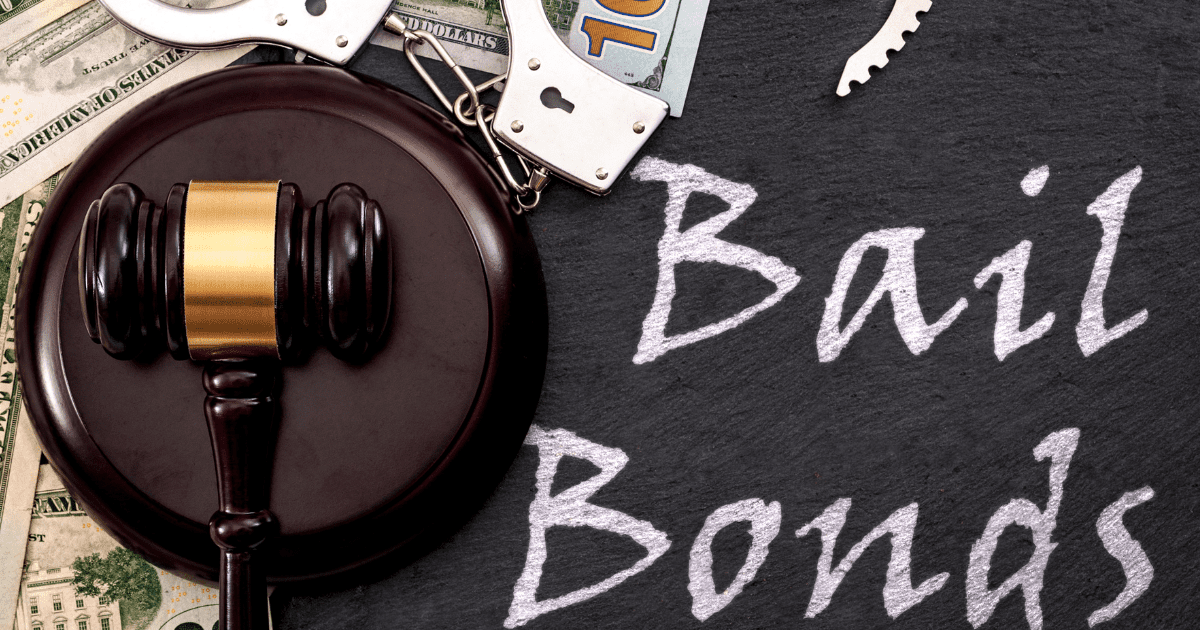Craven Bail Bonds Medina Ohio-- Specialist Bail Aid When You Required It
Craven Bail Bonds Medina Ohio-- Specialist Bail Aid When You Required It
Blog Article
How Bail Bonds Feature and Their Duty in Wrongdoer Justice
Bail bonds work as a crucial financial device within the criminal justice system, helping with the momentary launch of offenders while they wait for trial. This procedure involves a bondsman charging a charge to safeguard a bond, which ensures the court that the offender will certainly stand for their set up hearings. While these bonds intend to maintain the concept of presumed virtue, they additionally fire up critical discussions bordering issues of equity and gain access to, particularly for low-income individuals. As the landscape of Bail reform evolves, the ramifications of these devices warrant further assessment.
Summary of Bail Bonds
The principle of Bail bonds works as a critical mechanism within the criminal justice system, helping with the short-term release of people waiting for trial. This system operates the concept that accuseds must not be needlessly detained prior to their court look, provided they pose no significant flight risk or threat to public safety and security. Bail bonds allow offenders to safeguard their launch by giving an economic warranty, guaranteeing their visibility at subsequent court days.
Bail can be set by a judge, that takes into consideration different factors, including the extent of the alleged offense, the defendant's criminal history, and community connections. If an accused can not afford the full Bail quantity, they might look for support from a bail bondsman, that generally charges a non-refundable cost, typically around 10% of the overall Bail. In return, the Bail bondsman thinks the risk of the defendant failing to appear in court.
The bail bond system is not without its criticisms, as it questions regarding equity and accessibility in the justice process. Lots of argue that the dependence on economic conditions for release overmuch impacts low-income people, possibly exacerbating social inequalities within the lawful framework.
The Bail Bond Process
Navigating the bail bond procedure includes a number of crucial steps that both offenders and their family members should recognize. Initially, after an apprehension, the court will set a bail amount based on the intensity of the costs, the offender's criminal background, and the perceived flight danger. When the Bail quantity is developed, defendants or their families can come close to a bondsman for aid.
The next step is to offer the bail bondsman with needed details, consisting of the offender's information and the Bail amount. The bondsman will commonly charge a non-refundable fee, normally a portion of the overall Bail, which is mandated by state laws. In exchange, the bondsman problems a bail bond to the court, safeguarding the accused's release from wardship.
Upon release, it is vital for the offender to follow all court appearances. Failure to do so can cause the loss of the bail bond and prospective lawful effects. Throughout the process, clear communication with the Bail bondsman is vital to ensure all demands are satisfied and to help with a smooth shift back to liberty while waiting for trial.
Types of Bail Bonds
Bail bonds can be categorized right into several kinds, each serving distinct functions and providing to various scenarios. The most common kind is the surety bond, where a bail bondsman offers the court with a warranty for the complete Bail quantity for a charge, commonly around 10% of the Bail. This is useful for offenders who can not manage the whole Bail amount upfront.
Another type is the money bond, which needs the accused or a family members participant to pay the complete Bail quantity in money to the court. If the offender appears for all court days, the cash is reimbursed after the situation ends, minus any type of fees.
Property bonds include the usage of actual estate as collateral for the Bail amount. If the offender stops working to appear, the court can take the residential or commercial property. Lastly, there are immigration bonds particularly for non-citizens restrained by immigration authorities, enabling their launch while waiting for hearings.
Each sort of bail bond offers various monetary effects and dangers, allowing offenders to browse the intricacies of the criminal justice system in such a way that finest matches their scenarios.
Influence on Family Members and defendants
Understanding the different kinds of Bail bonds is vital for understanding their broader effect on offenders and their family members. The Bail system commonly positions substantial monetary strain on people and their loved ones, especially when cash money Bail is called for. For numerous households, protecting the funds for Bail can lead to economic challenge, compeling them to divert resources other from vital needs such as housing and education and learning.
In addition, the psychological toll on defendants and their families can be extensive. The unpredictability bordering court dates, potential incarceration, and the stigma of a criminal fee can produce long lasting anxiety and stress and anxiety. Family members may experience a feeling of isolation as they navigate the complexities of the lawful system, frequently really feeling unprepared for the obstacles ahead.
Furthermore, the dependence on Bail bonds can bring about a recurring cycle of debt. Households might sustain substantial prices when making use of bail bond solutions, including costs that can rise to 10% of the Bail quantity. This economic concern can aggravate existing socioeconomic differences, making it hard for households to recover even after the lawful procedures end. Thus, the ramifications of Bail bonds expand much past the courtroom, influencing the financial and social fabric of families involved.
Current Disputes on Bail Reform
Amid ongoing discussions about the justice system, present debates on Bail reform have gathered substantial interest from policymakers, supporters, and the public. The primary focus of these discussions is the integral injustices in the cash Bail system, which critics say overmuch influences low-income individuals and areas of shade. Supporters for reform compete that the current system bolsters cycles of poverty and imprisonment, as several offenders are incapable to pay Bail and stay incarcerated pre-trial, often causing job loss, family disturbance, and negative lawful outcomes.

As different jurisdictions check out alternatives, such as threat assessment tools and pre-trial solutions, the conversation remains to evolve. The implications of these reforms are far-ranging, asking for a cautious balance between making certain justice and maintaining public safety.
Conclusion
Bail bonds serve a substantial function in the criminal justice system by facilitating momentary launch for offenders while awaiting test. Ongoing debates regarding Bail reform continue to stress the requirement for a more just and fair read system that addresses the differences developed by current Bail practices.

The most typical kind is the guaranty bond, where a bail bondsman offers the court with a guarantee for the complete Bail amount in exchange for a fee, normally around 10% of the Bail. The Bail system commonly positions substantial economic stress on people and their liked ones, especially when cash money my explanation Bail is needed. Households might incur substantial costs when making use of bail bond solutions, including fees that can reach up to 10% of the Bail quantity.
Report this page